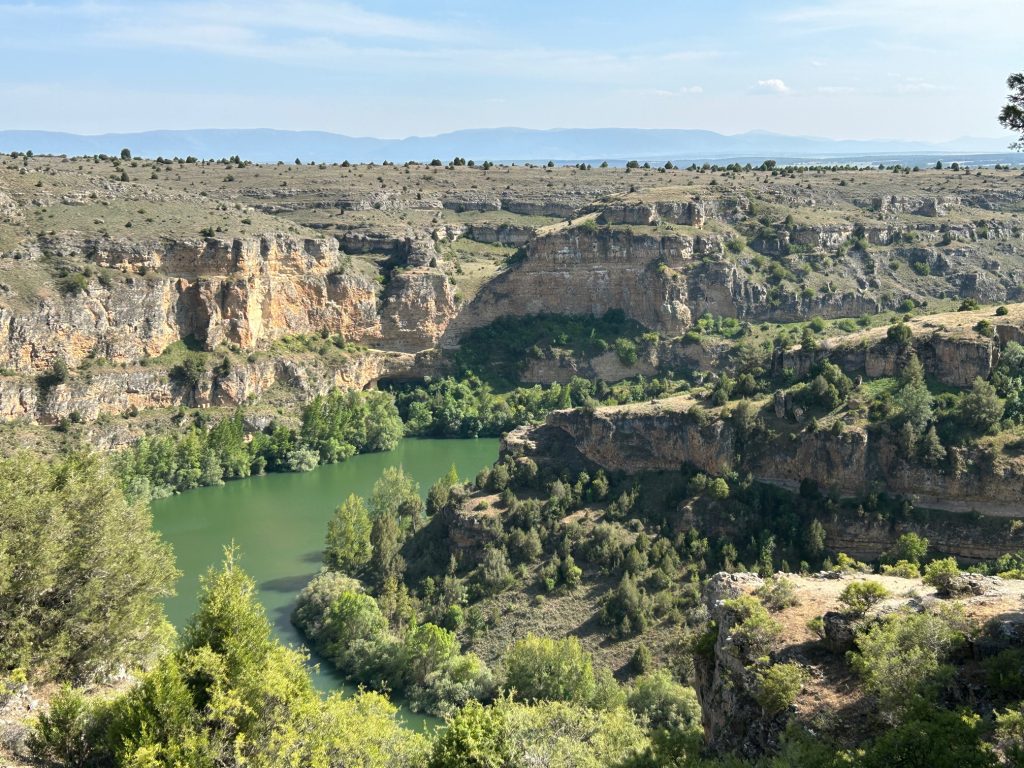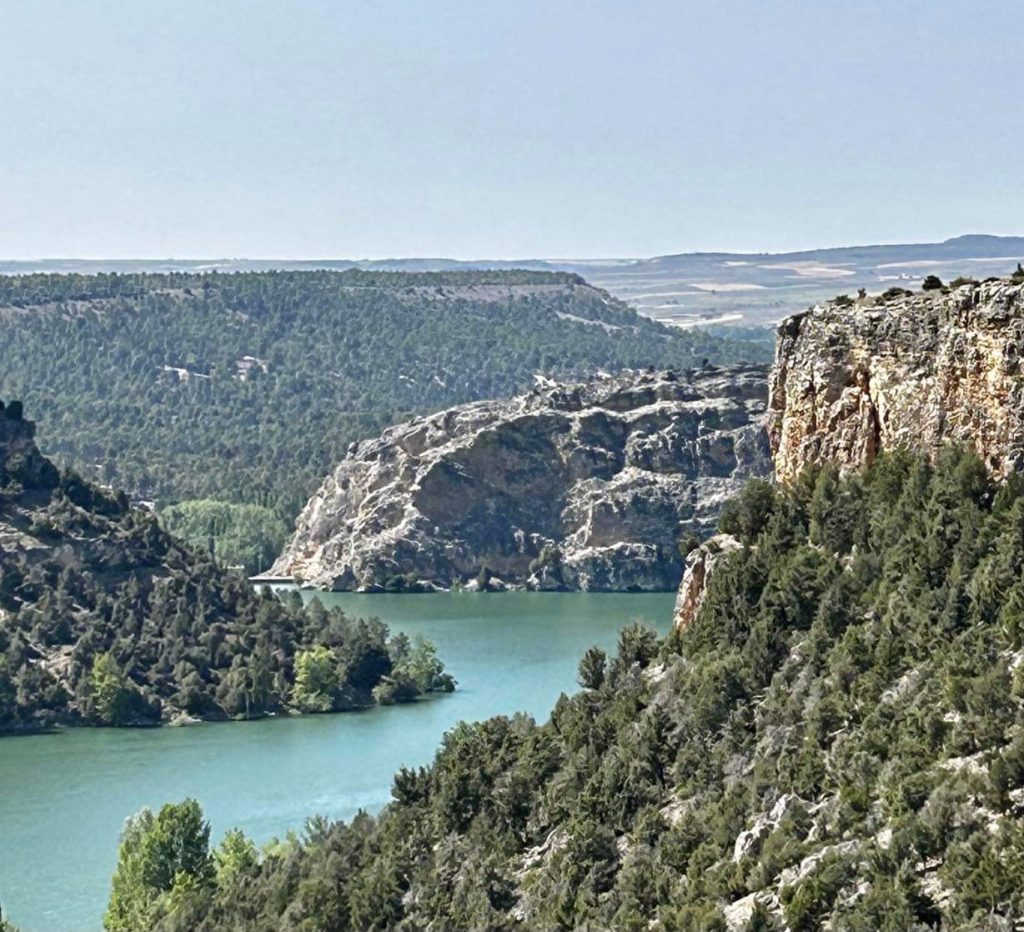The best day yet of Tour 7.
Today was about visiting the small town of Sepulveda and, if time and energy permitted, the nearby Ermita San Frutos in the Hoces Del Rio Duraton National Park. Both places were recommended by the owners of Camping Riberduero as ‘go to’ places in the area.
Hidden within the dramatic canyons of Las Hoces del Río Duratón National Park, Sepúlveda is one of the prettiest villages in the province of Segovia and another great find.
We entered Sepuldeva from the east and stopped in a sizeable car park just off Calle Alonso VI. I subsequently learned that the prettiest approach into the town is from the south along SG-232, which route takes you past the Mirador de Zuloaga and it’s grand view of of the town clinging to the side of a particularly deep canyon formed by the Rio Duraton. That might be worth remembering for the future.
From the car park we walked along Calle de Alfonso VI and through the main gate, El Puerto del Ecce Homo, (which is actually an arch with the alternative name of El Arco del Ecce Homo – Remember, this is Spain) into what I shall call the Upper Town. The Upper Town is mostly residential although, just inside the arch, there is a hotel and a museum (the Museo de Los Fueros) and towards the top of the town, almost at it’s highest point, there is a fine church (the Iglesia de la Virgen de la Pena or, in English, the Church of Our Lady of Pena). This church is perched at the very edge of the canyon and has spectacular views. It is also the starting point for a series of great walks but, more about those in a moment.

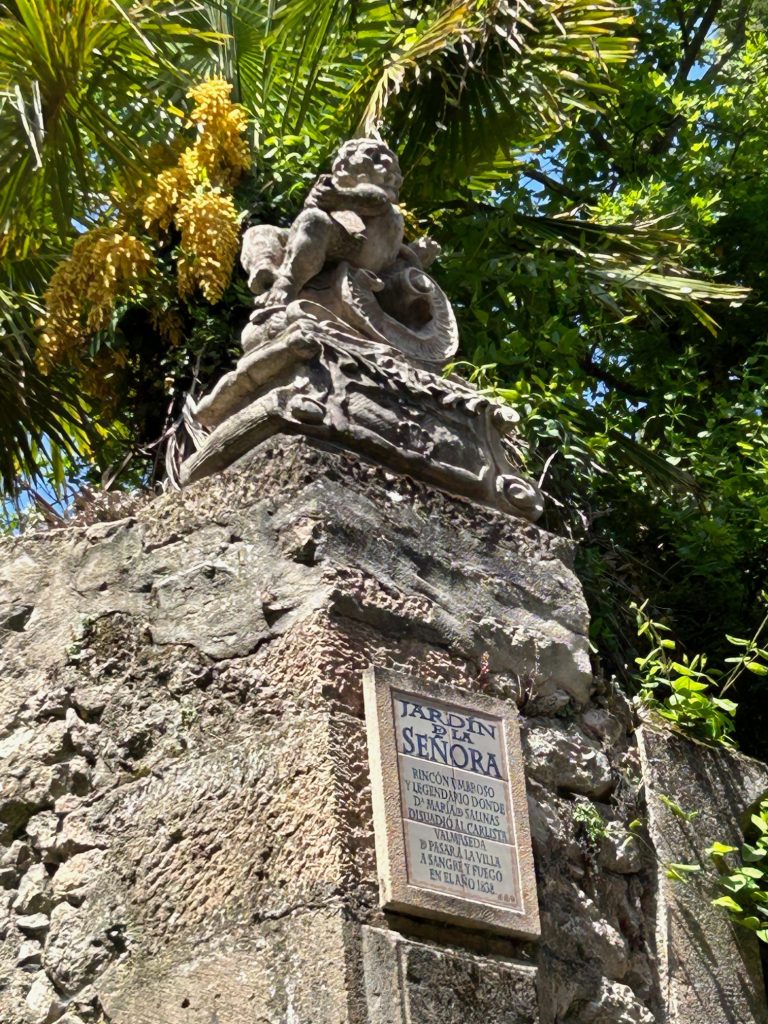
The entrance to the Upper Town, the Arco del Ecce Homo O Puerta del Azogue, sounds most grand but it is a very plain entrance into what was once the walled part of the town.
Vanya and I wandered around the Upper Town for a while before making our way to the Church of Our Lady of Pena. This church dates back to the 12th century but, for all that, it is not the oldest church in Sepuldeva. This particular honour goes to another not so attractive church in the Upper Town – the 11th century Church of El Salvador.
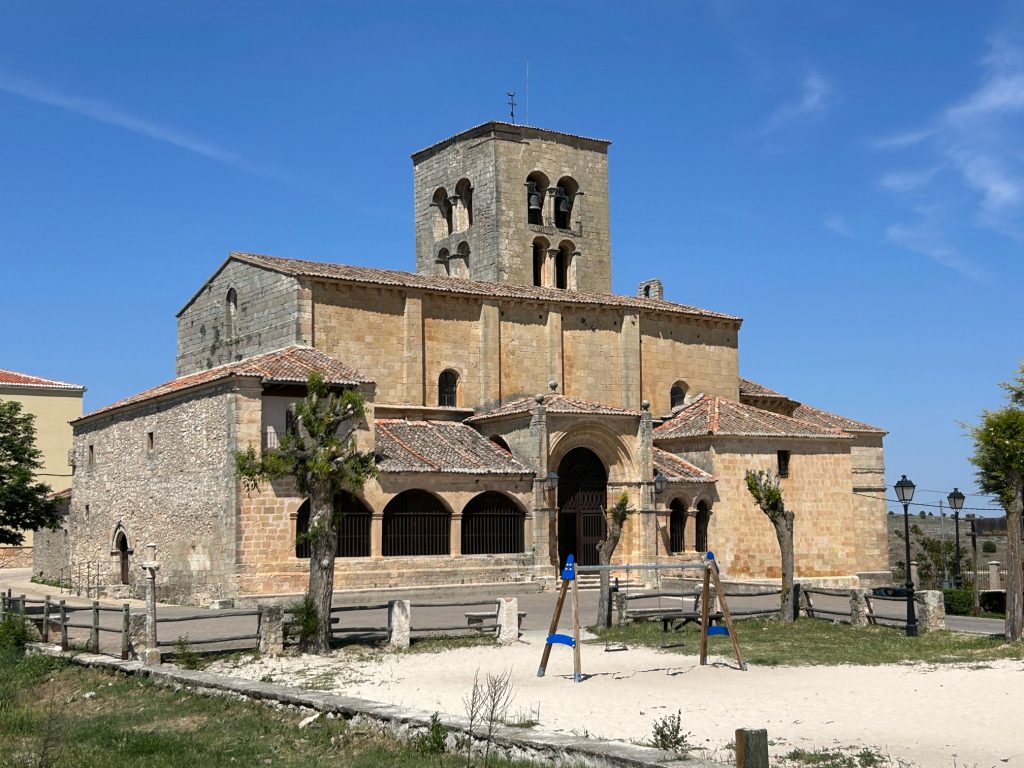
Iglesia de la Virgen de la Pena at the top of the town. The Canyon is directly behind the church.
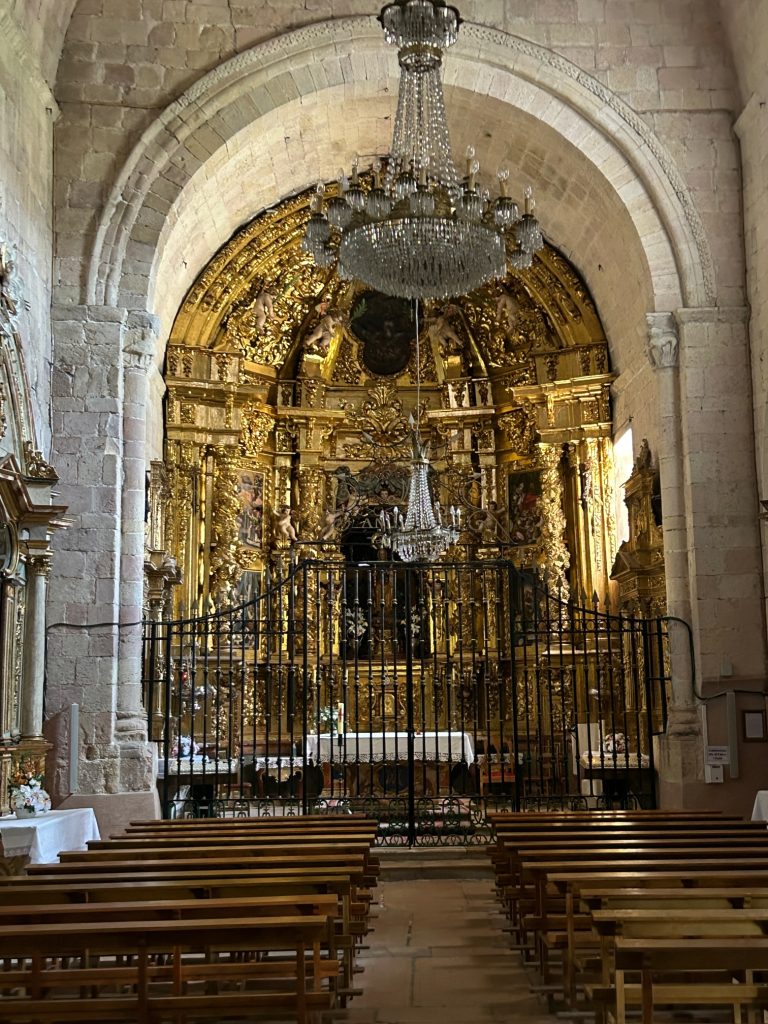
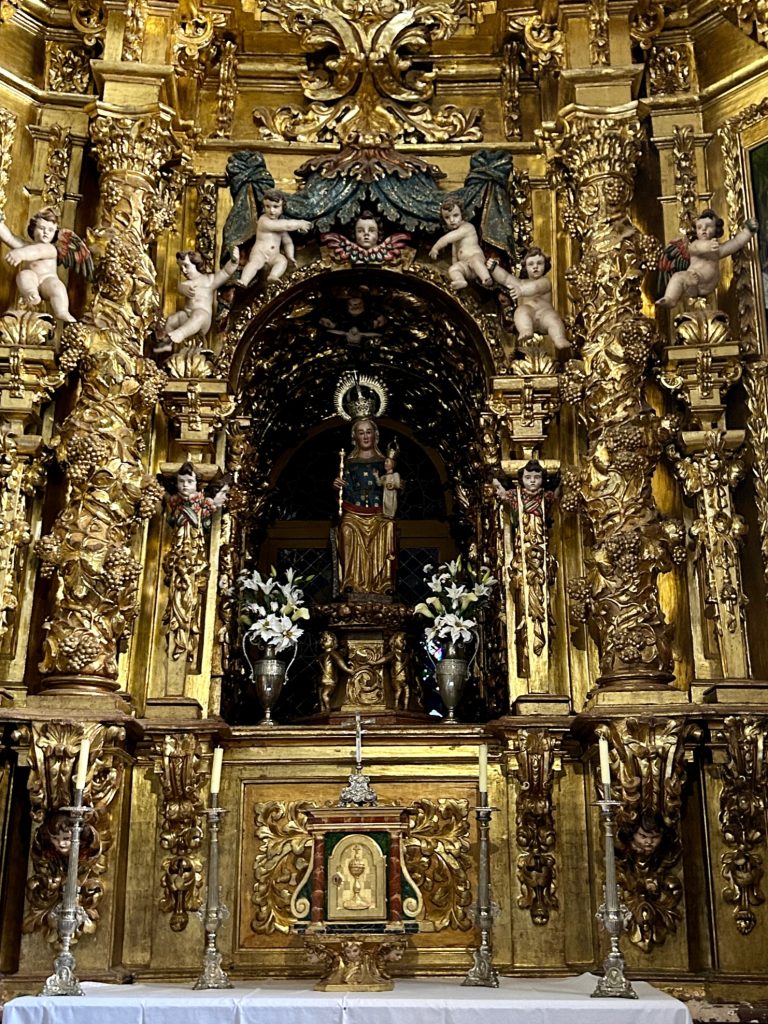
Inside the Church and…
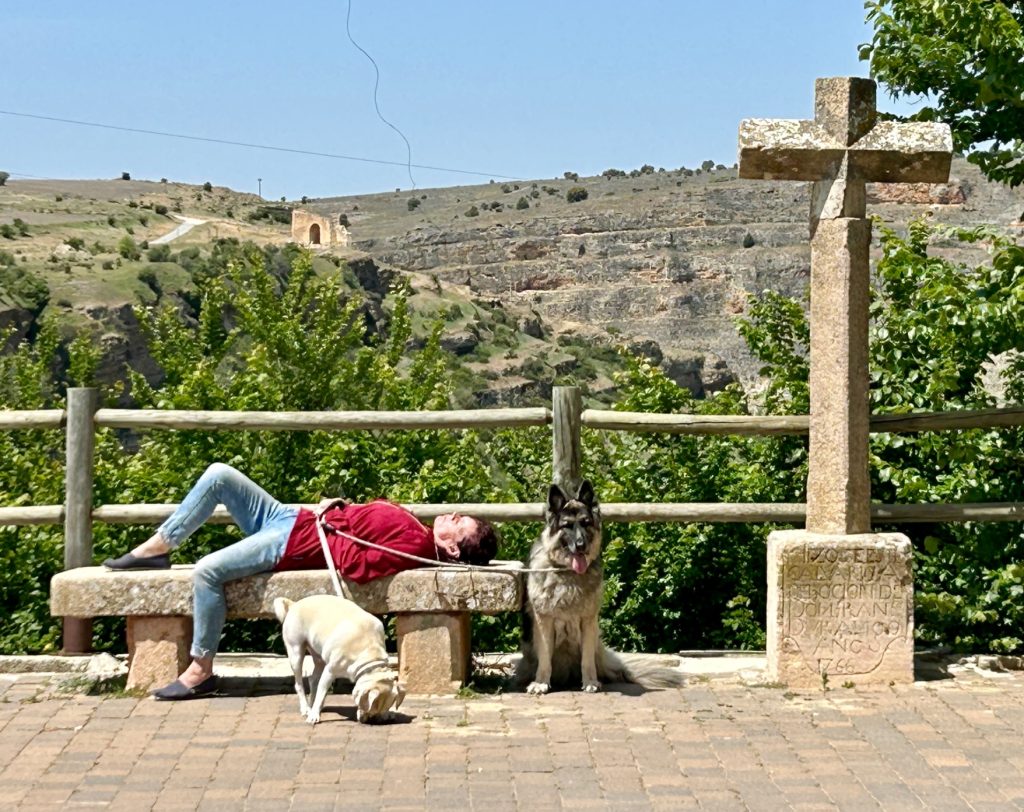
… outside the Church. I believe I have mentioned before that (figuratively and literally) Vanya is not into churches.
I digress slightly but, later in the day, some time after lunch and having escorted Vanya and the dogs back to the Van, I returned to the Upper Town and embarked on a final brief explore – walking on past the church, through the Puerta de la Fuerza and down into the canyon to the Rio Duraton. It was good exercise and made for a couple of reasonable photo opportunities.

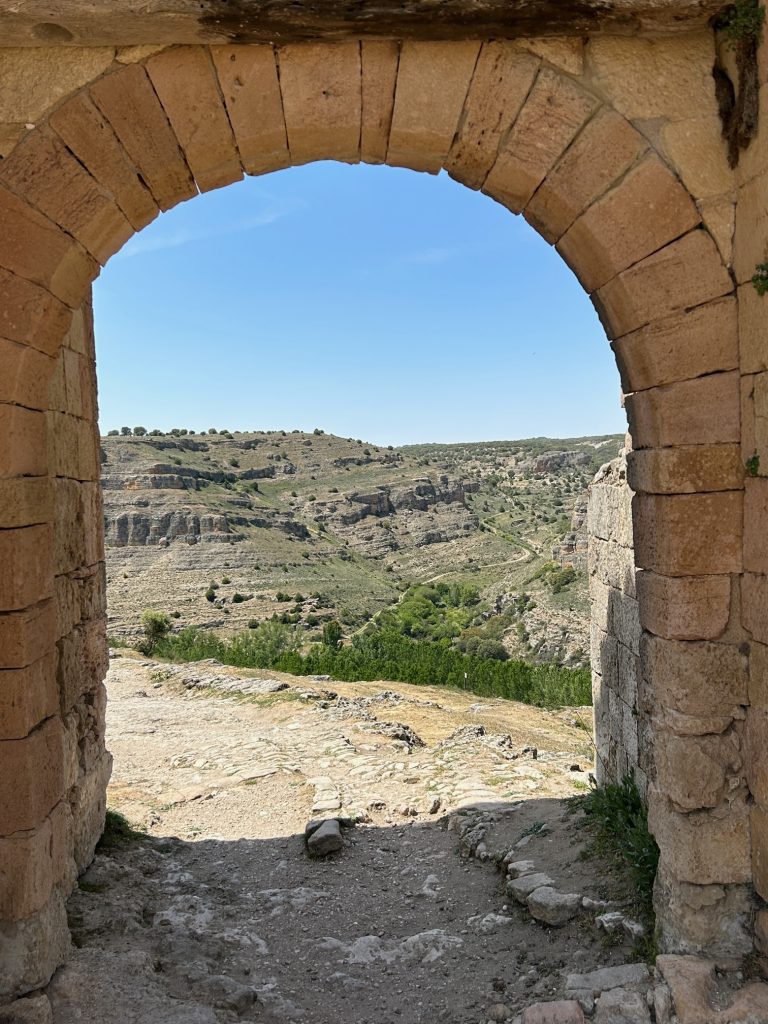
Left: Looking back, above the canyon, to the Iglesia de la Virgen de la Pena Right: The route on through the Puerta de la Fuerza would take me down to…
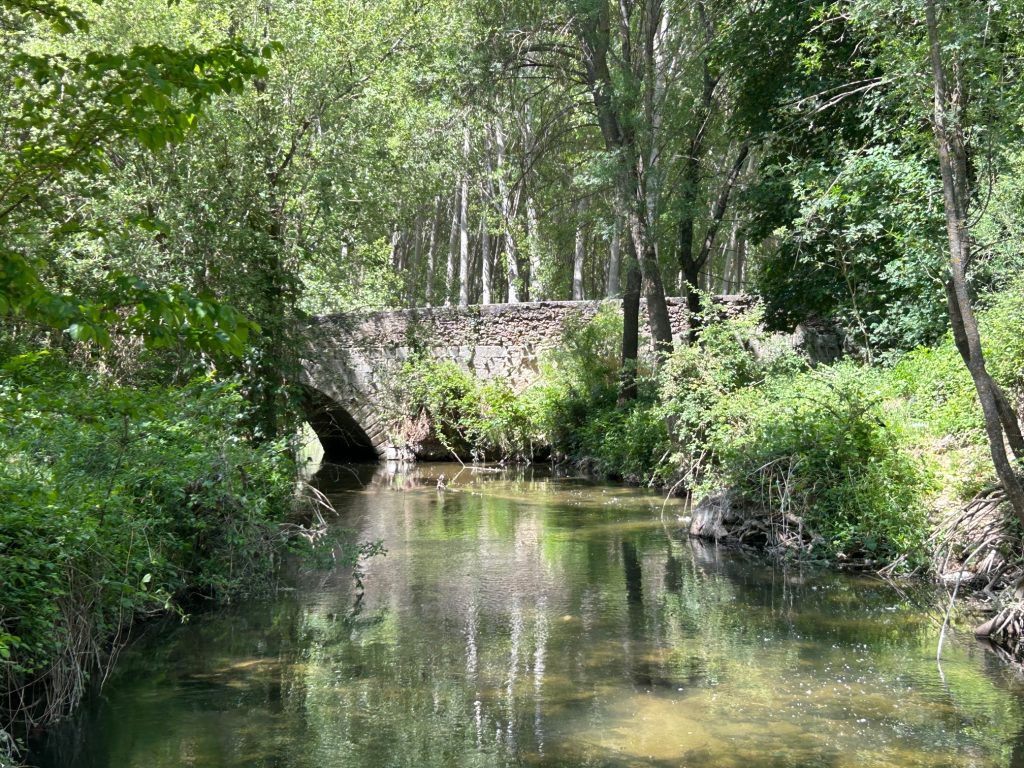
… the Puente Picazos. It was a warm walk back up to the top of the canyon.
So, back to the town. Immediately after visiting the Church of Our Lady of Pena, Vanya and I returned through the Upper Town to the Arco del Ecce Homo and along Calle Barbacana to the main part of Sepulveda which I shall refer to as the Lower Town.
The Lower Town is where most of the action is and where the majority of the 1,000+ inhabitants live. Calle Barbacana leads to it’s centre, a couple of small squares (Plaza del Trigo and Plaza de Espana) where, as we arrived, a farmers market was just closing. We checked out the market and then tarried outside a bar on the square(s) under the Clock Tower and watched the stallholders slowly and silently pack away their unsold produce and depart. At midday or thereabouts, Sepulveda is one of those slow sleepy towns where it feels quite normal to build an appetite by simply lazing around over a cup of coffee and watching others go about their business.
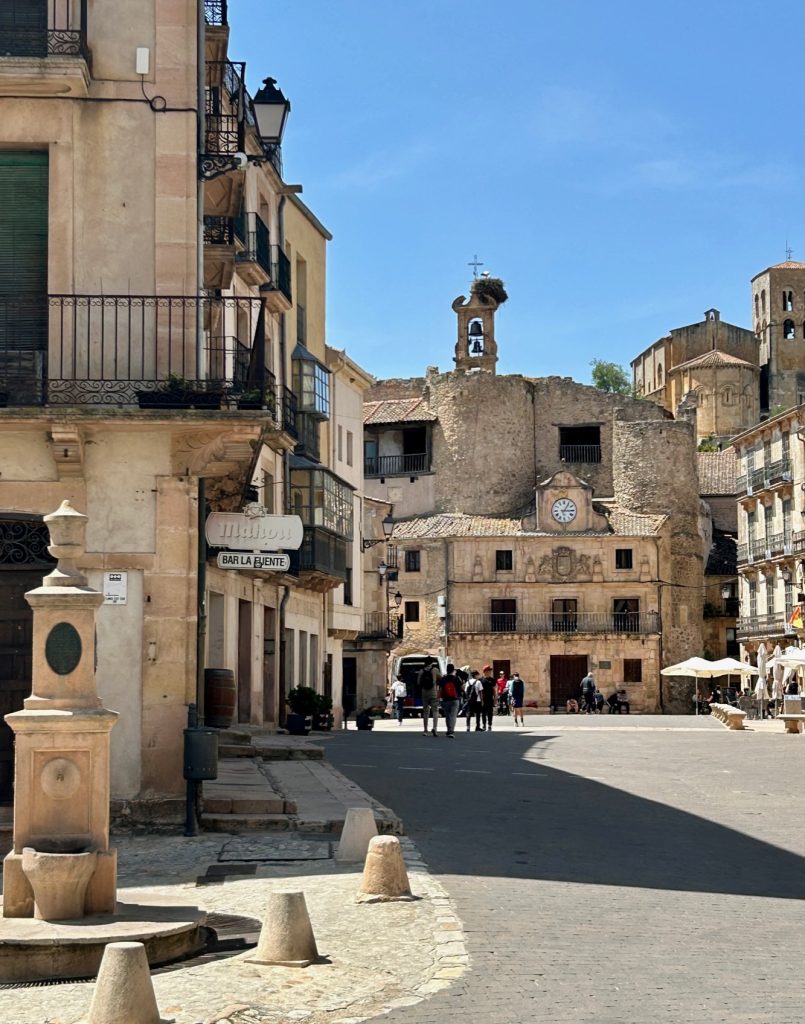
The Clock Tower with, behind it, La Muralla de Sepulveda (part of the old fortress walls which used to separate the Upper Town from the Lower Town) and on the top right of the photo is the of the Church of El Salvador.
Having developed a healthy appetite we moved just around the corner to the pretty Calle Lope Tablada de Diego and at the restaurant El Figon de Ismael we were persuaded by the proprietor to try the local speciality, Cordero de Lechal – a nice little lamb dish she said.
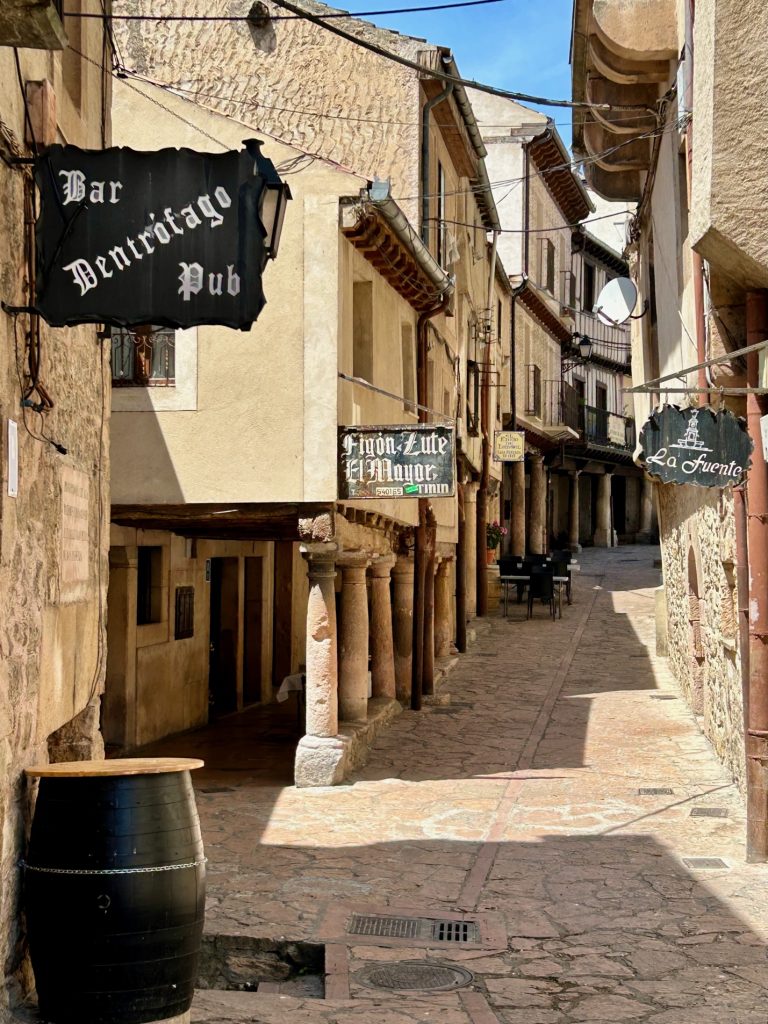

The Calle Lope Tablada de Diego where we found the El Figon de Ismael Restaurant


On the left is the entrance to the El Figonde Ismael (with our hostess in the background) and on the right is the wine we enjoyed, a local Rueda. Now mark my words, we will all be hearing more about Rueda. Currently it is largely unknown outside of Spain but I suspect it will soon become very popular.
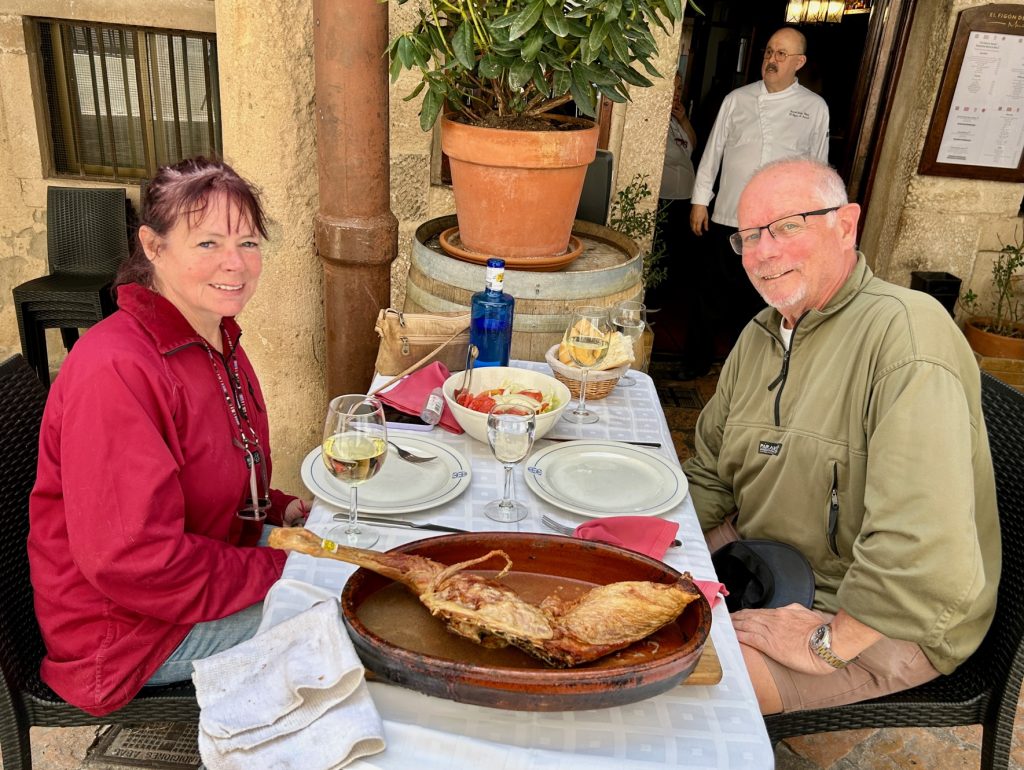
And there’s our food, the local lamb dish known as Cordero de Lechal and that’s the chef in the background.
One of the things I really like about the Spanish (and the French too) is their enthusiasm for good food. We British are obsessed with the weather and talk about it all the time, even to complete strangers. The Spanish and the French are much the same about food but “a nice little lamb dish”? There was nothing little about this particular meal. It could have fed four, not two, but having said that, this was slow cooked suckling lamb – melt in the mouth meat and crispy golden skin – and seriously good. We coped. Even Vanya who is not all that fond of meat, especially lamb, was impressed by the food. And the local Rueda was equally sound. Unfortunately, the Balbas Bodega would not be open until the next week or we’d have popped in on the way back to Penafiels and bought a few bottles.
And so it was that, after a great start to the day in Sepulveda and well fed, we made for the Ermita San Frutos (that’s Fructos in English); a long abandoned hermitage in the Hoces del Rio Duraton Natural Park. The hermitage is only about 10 miles from Sepuldeva but it is a slow 10 miles because much of the journey is along a bumpy dirt track road and the last kilometre has to be walked.
Honestly, if you’re ever in this part of Spain, you have to visit the ruin. The first sight you get of the hermitage is from a view point just a couple of hundred meters from the car park and it’s setting is truly spectacular. If you don’t fancy the walk to the ruin itself, you’ll not be disappointed with what you see from the view point.

Ermita San Frutos from the viewpoint. It’s an easy walk around to the hermitage but you will be watched, if not followed, by many Griffon Vultures. This area is home to the largest concentration of vultures in the world – 600 pairs.
San Frutos, Patron Saint of Segovia was born in the 7th century into a wealthy Visigothic family. When his parents died he and his brothers, Valentin and Engracia, distributed their inheritance amongst the poor and, seeking complete solitude, retired to separate caves in this area which is now part of the Hoces del Rio Duraton National Park.
Tradition holds that the three brothers remained in these caves for many years until the Moors invaded the area. Valentin and Engracia were caught and martyred by the Moors. Frutus survived his brothers but died of natural causes not long after at the age of 73. Legend has it that a number of locals, seeking to escape the Moors, made their way to where Frutos lived but were followed there by Moorish soldiers. Frutos drew a line in the earth and asked the soldiers not cross it. When the soldiers ignored him and crossed the line, the earth miraculously opened up and swallowed them. The Moors did not bother Frutos again.
The existing hermitage was built on top of a small church in 1076 and was occupied by Benedictine Monks through until 1836. To access it, you have to cross a narrow bridge which was built in 1757 over a large crack in the rock. It is said this crack, known by some as ‘La Cuchillada’ and by others as the ‘Slash of San Frutos’, is where the Moorish soldiers fell to their death.
Just after the bridge and in front of the entrance to the hermitage, forged on a stone pedestal, is a large iron cross with seven engraved keys that correspond to the seven gates of Sepulveda. This cross was raised to commemorate a great pilgrimage to the hermitage in 1900.
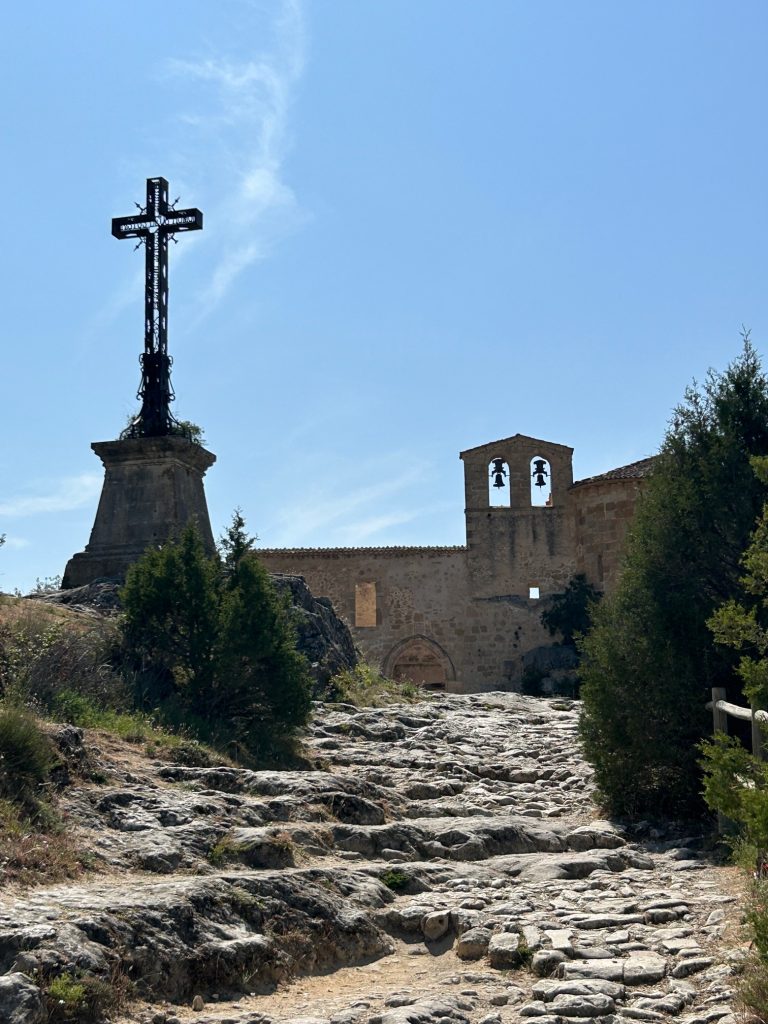
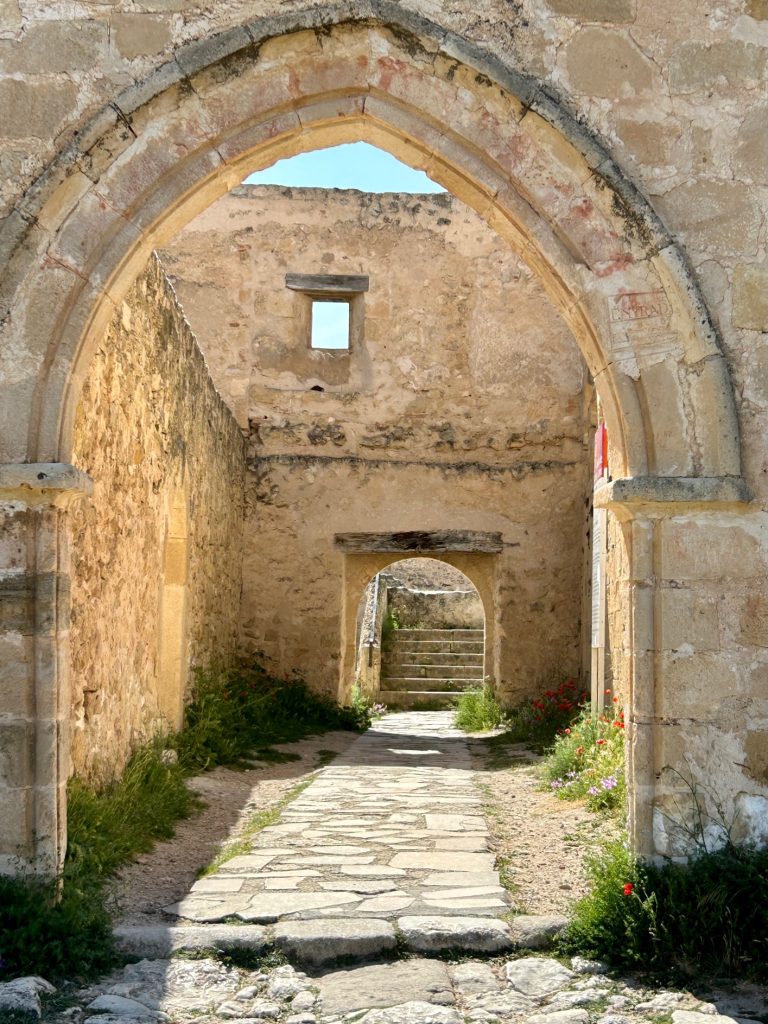

I could have sat amongst the ruins of the hermitage for quite a while. It was so peaceful. One thing I couldn’t help but notice, however, was that some of the headstones in the small graveyard at the back of the hermitage look very new. Curious.
Of course, it is the natural splendour surrounding this place which takes the breath away. The views in every direction are wild and spectacular and I must therefore end this entry on Sepuldeva with a couple more photos of the countryside.
